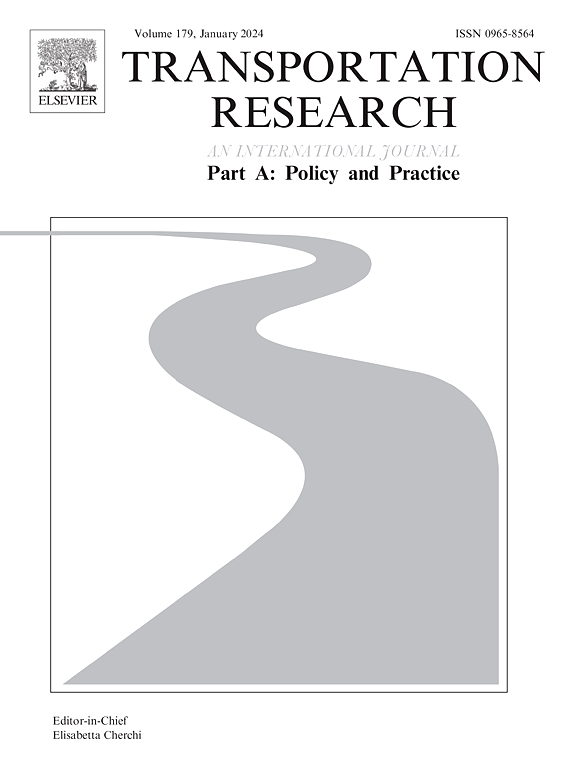Emission reduction effects of electric vehicle promotion and application pilots: Cooperative pilots vs single pilots
IF 6.3
1区 工程技术
Q1 ECONOMICS
Transportation Research Part A-Policy and Practice
Pub Date : 2025-03-27
DOI:10.1016/j.tra.2025.104456
引用次数: 0
Abstract
Previous studies have estimated the effectiveness of electric vehicle (EV) promotion policy pilots based on inter-city competition. However, the effectiveness of introducing inter-city cooperation mechanisms into these pilots remains unclear. Our study examines the EV promotion and application policy pilots initiated in 2013, focusing on “single pilots” established by single cities and “cooperative pilots” formed by groups of cities. Using panel data from 280 Chinese cities from 2003 to 2019, we employ the time-varying difference-in-differences method to analyze the carbon emission reduction effects of both single and cooperative pilots and explore potential spatial spillover effects. Results show that single pilots significantly reduce carbon emissions in the implementing cities, with this effect being more pronounced in smaller cities and those with high-speed rail systems. However, the impact of cooperative pilots is not significant. Among the single pilots, cities that participated in the previous “Ten Cities, Thousand Vehicles” pilot achieved better carbon emission reduction outcomes, but this advantage is not evident in the cooperative pilots. Furthermore, when considering the spillover effects, both single and cooperative pilots significantly promote carbon emission reduction in neighboring cities, with cooperative pilots leading to a larger spillover effect than single pilots. This study provides theoretical guidance and insights for optimizing the design of industrial policy pilots.
求助全文
约1分钟内获得全文
求助全文
来源期刊
CiteScore
13.20
自引率
7.80%
发文量
257
审稿时长
9.8 months
期刊介绍:
Transportation Research: Part A contains papers of general interest in all passenger and freight transportation modes: policy analysis, formulation and evaluation; planning; interaction with the political, socioeconomic and physical environment; design, management and evaluation of transportation systems. Topics are approached from any discipline or perspective: economics, engineering, sociology, psychology, etc. Case studies, survey and expository papers are included, as are articles which contribute to unification of the field, or to an understanding of the comparative aspects of different systems. Papers which assess the scope for technological innovation within a social or political framework are also published. The journal is international, and places equal emphasis on the problems of industrialized and non-industrialized regions.
Part A''s aims and scope are complementary to Transportation Research Part B: Methodological, Part C: Emerging Technologies and Part D: Transport and Environment. Part E: Logistics and Transportation Review. Part F: Traffic Psychology and Behaviour. The complete set forms the most cohesive and comprehensive reference of current research in transportation science.

 求助内容:
求助内容: 应助结果提醒方式:
应助结果提醒方式:


